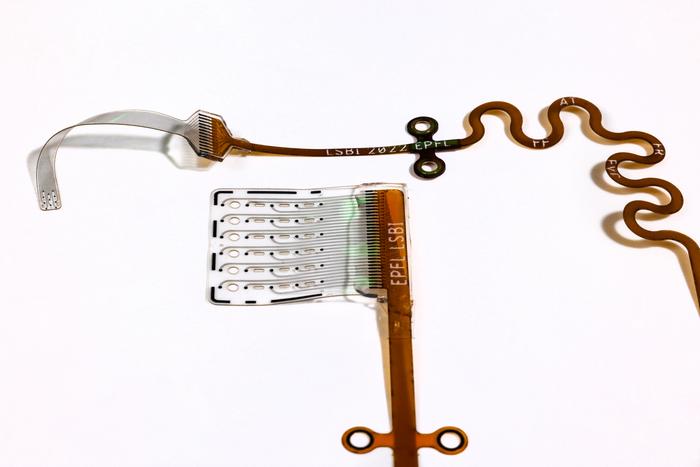The current auditory brainstem implant and its rigid structure does not allow for good tissue contact, which means a majority of the electrodes must be switched off due to unwanted side effects such as dizziness or facial twitching. A soft, thin-film version with electrodes embedded in silicone leads to a pliable array less than a millimeter thick.
Superior conformity means patients will no longer get vague sounds and little speech intelligibility - and fewer side effects.
The current work by researchers at Ecole Polytechnique Fédérale de Lausanne is only in macaques, so it is still exploratory, but the challenge in dealing with animals is that they can't readily tell you how well they hear so success in a lower primate can mean even better odds for humans. In this work, they were taught to to press and release a lever to show whether consecutive tones were the same or different.

Credit: 2025 EPFL/Alain Herzog - CC-BY-SA 4.0
To improve results, they went beyond conventional auditory brainstem implants, which are rigid and rest on the dorsal surface of the cochlear nucleus, leaving air gaps and undesired nerve stimulation due to off-target current spread. They used microlithography to ultra-thin silicone that bends around tissue. Right now, they have 11 electrodes but it will be customizable for different anatomies and frequency-specific tuning.
The animal study showed absence of noticeable off-target effects, like discomfort or muscle twitches around the face that are complaints of human ABI users.
The next step to regulatory approval will likely be controlled experiments, where during ABI surgery they in patients with sever cochlear nerve damage they could implant the soft array before the standard implant to quantify reduced stray nerve activation. If that works, a company with the means to afford substantial regulatory hurdles for new products can take it over.




Comments